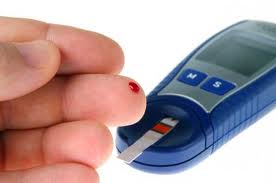Type 2 Diabetes Diet Plan
It is important for everyone to eat a healthy diet, regardless of their diabetes status. However, for people with diabetes, eating nourishing foods in the recommended portions comes with numerous important benefits, such as:
- Lowering blood sugar: Maintaining blood glucose levels within the recommended range helps diminish diabetes symptoms as well as reduce the risk of diabetes-related complications.
- Achieving a healthier weight: This is commonly associated with better A1C results and improved general health.
Can you create your own healthy diabetes diet plan?
A healthy eating plan is basically a diet that helps control blood sugar levels. This means eating healthy foods in moderation at regular times.
A healthy diabetes diet plan is an eating plan that contains foods that are naturally low in calories and fat and rich in vitamins and nutrients. Some of the key elements of a healthy eating plan include vegetables, whole grains, and fruits. In fact, what most people refer to as a “diabetes diet” is actually the best diet plan for almost everyone.
Why should you create a diabetes diet plan?’

A diabetes diet plan will help you manage your weight, control your blood glucose, and reduce the risk of heart diseases, such as high blood fats and high blood pressure.
Eating extra fat and calories can contribute to a rise in blood sugar levels. If unchecked, consistently high blood sugar levels (hyperglycemia) can lead to long-term complications, including heart, kidney, and nerve damage.
Making healthier food choices and keeping track of your eating habits can help maintain your blood sugar levels within your target range.
Studies show that weight loss can make it easier for people with type 2 diabetes to control their blood sugar. A healthy diabetes diet plan provides a nutritious way to lose weight and maintain it within your desired range. Weight loss also comes with numerous other health benefits, including building self-confidence, especially for people who are overweight or obese.
A healthy diabetes diet plan advocates for eating 3 meals per day and adhering to a regular meal schedule. You can consult a registered dietitian who will help you design a diabetes diet based on your specific health goals, lifestyle, and tastes. They will also recommend ways of improving your eating habits, including tips such as serving portion sizes that match your body mass and activity level.
Which foods should you include in your diabetes diet plan?
Choose healthy nutritious foods such as fiber-rich foods, good fats, heart-healthy fish, and healthy carbs.
1. Foods high in fiber
Dietary fiber is usually sourced from parts of various plant foods that can’t be digested or absorbed by the body.
Fiber-rich foods include vegetables, nuts, whole grains, fruits, fish, and legumes, such as peas and beans. Heart-healthy fish such as mackerel, sardines, tuna, and salmon are high in omega-3 fatty acids, which have been linked to a lower risk of heart disease. Stay away from fried fish as well as fish with high mercury levels.
2. Healthy carbohydrates
Complex carbohydrates (starches) and simple carbohydrates (sugars) are broken down into blood glucose during digestion. Go for healthy carbs such as whole grains, fruits, vegetables, legumes, and low-fat dairies such as cheese and milk.
Avoid food and drinks with added sugars, fats, and sodium.
3. Good fats
Foods high in polyunsaturated and monounsaturated fats can help lower cholesterol levels in the body. Choose ‘good’ fats such as nuts, avocado, peanut, olive, and canola oil.
Remember, all fats contain high amounts of calories, so you should not overdo them.
Which foods should you avoid?
Numerous studies have linked diabetes to an increased risk of stroke and heart diseases, largely as a result of the accelerated development of hardened and clogged arteries.
- Saturated fats: Stay away from high-fat dairy products as well as animal protein such as hot dogs, bacon, butter, sausage, and beef.
- Trans Fats: Avoid processed snacks and processed snacks, which are high in trans fats.
- Cholesterol: Some of the most common sources of cholesterol are animal fat proteins and high-fat dairy products. People with diabetes should limit cholesterol to 200 mg per day.
- Sodium: Limit your sodium intake to 2,300 mg per day or less, especially if you have diabetes and high blood pressure.
How do you create a diabetes diet plan?
You can use several approaches to design a diabetes diet plan that will help you control your blood sugar levels. In most cases, you may need the informed help of a dietitian while creating a plan that works for your specific health needs and goals. Some of the methods used include:
1. The plate method
This method offered by the ADA (American Diabetes Association) focuses on increasing the amount of vegetables in your diet. According to the plate method, half of your plate should contain non-starchy vegetables, such as tomatoes, carrots, and spinach. A quarter of your plate should be made up of protein, such as chicken, lean pork or tuna. The last quarter should be filled with whole grain items, such as starchy vegetables or brown rice. Add good fats in small amounts and a serving of dairy or fruit.
2. Choosing foods
Your dietitian may recommend choosing specific food items to help plan your meals and snacks according to your health goals. These food lists typically include categories such as proteins, carbohydrates and fats. Each food choice contains almost the same amount of calories, fat, carbs, and protein as a serving of all the other foods in the same category. Therefore, these foods have similar effects on blood sugar levels.
3. Counting carbs

Therefore, to help maintain your blood sugar levels within your target range, you may have to keep track of your carbohydrate intake (in each meal and snack) so you can adjust your insulin dose accordingly.
Your dietitian will teach you how to read food labels, measure food portions, and calculate carbohydrate content.
4. GI (Glycemic Index)
The glycemic index can also be used to choose foods, especially carbs. This index ranks carbs-containing foods according to their effects on blood sugar levels. Your dietitian can help you determine whether the method of using the GI index to select foods is right for you.
Sample menu (1 day)
Breakfast: Veggie omelet (2 egg whites and 1 whole egg), topped with low-fat cheese and fruit.
Snack: Low-fat or non-fat Greek yogurt plus berries.
Lunch: Salad (leafy greens or dark lettuce) topped with chickpeas and chicken breast with vinegar and olive oil dressing.
Snack: Sliced veggies and hummus.
Dinner: Steamed broccoli, grilled salmon, and quinoa.
Adopting and adhering to a healthy diabetes diet plan is the best way to control your blood sugar levels and lower the risk of complications. Moreover, you can tailor your diet plan to suit your health goals, including weight loss.
The bottom-line
In addition to helping manage your diabetes, a healthy diet also provides other benefits. For instance, due to the generous amount of veggies, fiber, and fruit recommended by a diabetes diet, adhering to it can help reduce your risk of certain types of cancers and cardiovascular diseases.
If you have already been diagnosed with diabetes or prediabetes, it is important to partner with your dietitian and doctor to create a healthy eating plan customized according to your heeds, tastes, and goals. Keep in mind that straying away from your prescribed diabetes diet increases your risk of hyperglycemia (high blood sugar levels) as well as other serious diabetes-related complications.



 If insulin doesn’t work properly or there’s not enough of it, blood sugar levels rise.
If insulin doesn’t work properly or there’s not enough of it, blood sugar levels rise. 




 What are the benefits of gastric sleeve surgery?
What are the benefits of gastric sleeve surgery?




